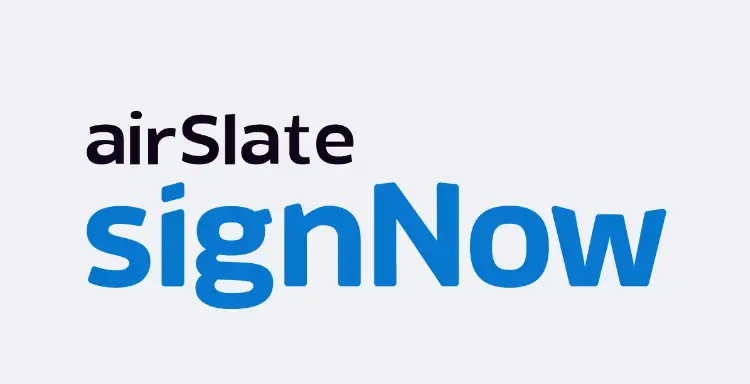
The healthcare industry is rapidly embracing digital transformation, and electronic signatures are a key component of this shift. Electronic signatures streamline administrative processes, improve patient care, and ensure compliance with legal and regulatory requirements. This article explores the importance, applications, and benefits of electronic signatures in healthcare.
Importance of Electronic Signatures in Healthcare
Electronic signatures offer significant advantages in healthcare, including:
- Efficiency: Streamline administrative processes by eliminating the need for physical paperwork.
- Compliance: Ensure adherence to legal and regulatory requirements, such as HIPAA.
- Security: Provide secure methods for signing and storing sensitive healthcare documents.
- Patient Experience: Improve the patient experience by reducing wait times and simplifying consent processes.

Best eSignature service
Applications of Electronic Signatures in Healthcare
1. Patient Consent Forms
Obtaining patient consent is a critical part of healthcare. Electronic signatures simplify the process, allowing patients to sign consent forms digitally, whether in the clinic or remotely.
- Ease of Access: Patients can sign consent forms using their smartphones, tablets, or computers.
- Real-Time Processing: Immediate processing and storage of signed forms in the patient’s electronic health record (EHR).
2. Medical Records
Healthcare providers use electronic signatures to sign and validate electronic health records (EHRs), ensuring accuracy and authenticity.
- Improved Accuracy: Reduces errors associated with manual record-keeping.
- Secure Storage: Ensures that medical records are securely stored and easily accessible to authorized personnel.
3. Prescriptions
E-signatures facilitate e-prescribing, allowing healthcare providers to send prescriptions directly to pharmacies electronically.
- Efficiency: Speeds up the prescription process, reducing patient wait times.
- Security: Ensures that prescriptions are securely transmitted, reducing the risk of forgery.
4. Administrative Documents
Healthcare organizations use electronic signatures for internal documents, contracts, and agreements, streamlining administrative workflows.
- Workflow Automation: Automates document routing and approval processes, reducing administrative burden.
- Cost Savings: Reduces costs associated with printing, mailing, and storing paper documents.
Legal and Regulatory Compliance
HIPAA Compliance
The Health Insurance Portability and Accountability Act (HIPAA) sets stringent requirements for the security and privacy of health information. Electronic signatures must comply with HIPAA to ensure that signed documents are secure and the patient’s information is protected.
- Security Measures: Implement robust security measures, such as encryption and access controls, to protect electronic signatures and signed documents.
- Audit Trails: Maintain detailed audit trails to track who signed the document, when, and from which IP address.
FDA Compliance
For clinical trials and pharmaceutical approvals, electronic signatures must comply with FDA regulations, such as 21 CFR Part 11, which sets guidelines for electronic records and signatures.
- Validation: Ensure that electronic signature systems are validated to meet FDA requirements.
- Audit Trails and Documentation: Maintain comprehensive audit trails and documentation to demonstrate compliance.
Benefits of Electronic Signatures in Healthcare
1. Enhanced Security
Electronic signatures provide enhanced security through encryption and authentication methods, ensuring that signed documents are tamper-proof and the signer’s identity is verified.
- Encryption: Protects the document from unauthorized access and tampering.
- Authentication: Verifies the signer’s identity using methods such as biometric data, digital certificates, or multi-factor authentication.
2. Improved Efficiency
Electronic signatures streamline document signing processes, reducing turnaround times and improving operational efficiency.
- Real-Time Signing: Allows for real-time signing and processing of documents.
- Automated Workflows: Automates document routing and approval processes, reducing administrative overhead.
3. Cost Savings
Eliminating the need for physical paperwork and manual processes results in significant cost savings.
- Reduced Paper Usage: Lowers costs associated with printing, mailing, and storing paper documents.
- Administrative Savings: Reduces administrative costs by automating document workflows.
4. Better Patient Experience
Electronic signatures enhance the patient experience by simplifying consent processes and reducing wait times.
- Convenience: Allows patients to sign documents electronically from anywhere.
- Faster Processing: Speeds up administrative processes, reducing wait times and improving patient satisfaction.

Best eSignature service
Challenges and Considerations
1. Technology Adoption
Implementing electronic signatures requires investment in technology and training for staff.
- Training: Ensure that staff are adequately trained on how to use electronic signature systems.
- Integration: Integrate electronic signature solutions with existing EHR systems and workflows.
2. Security and Privacy
Ensuring the security and privacy of electronic signatures and signed documents is paramount.
- Data Encryption: Implement robust encryption methods to protect signed documents.
- Access Controls: Ensure that only authorized personnel have access to signed documents.
3. Regulatory Compliance
Navigating complex regulatory requirements can be challenging.
- Compliance Audits: Conduct regular audits to ensure compliance with HIPAA, FDA, and other relevant regulations.
- Legal Expertise: Consult with legal experts to ensure that electronic signature practices meet all regulatory requirements.
FAQs of Electronic Signatures in Healthcare
1. What are electronic signatures?
- Electronic signatures (e-signatures) are digital versions of handwritten signatures that can be used to sign documents electronically. They are legally binding and secure, offering a convenient alternative to traditional paper-based signatures.
2. Are electronic signatures legal in healthcare?
- Yes, electronic signatures are legally recognized in healthcare. They comply with regulations such as the ESIGN Act and UETA in the United States, ensuring their validity and enforceability.
3. How do electronic signatures benefit healthcare providers?
- E-signatures streamline document workflows, reduce administrative burdens, enhance data security, ensure regulatory compliance, and improve patient experience by speeding up processes like patient onboarding and consent form signing.
4. Are electronic signatures HIPAA-compliant?
- Many e-signature solutions are designed to be HIPAA-compliant, incorporating features such as encryption, secure audit trails, and user authentication to protect patient information and meet healthcare industry standards.
5. Can patients sign consent forms electronically?
- Yes, patients can sign consent forms electronically, which speeds up the process and enhances the accuracy and security of the signed documents. This is particularly useful for remote consultations and telemedicine.
6. How secure are electronic signatures?
- E-signatures are highly secure, using encryption, authentication, and secure audit trails to protect signed documents and ensure that only authorized individuals can access and sign documents.
7. What types of documents can be signed electronically in healthcare?
- Various documents can be signed electronically, including patient consent forms, medical records, prescriptions, insurance claims, and administrative paperwork.
8. Do electronic signatures integrate with EHR systems?
- Many e-signature solutions offer integration with Electronic Health Record (EHR) systems, enabling seamless document signing and management within the healthcare provider’s existing digital infrastructure.
9. What should healthcare providers consider when choosing an e-signature solution?
- Healthcare providers should consider compliance with regulations (such as HIPAA), security features, integration capabilities with existing systems, ease of use, vendor reputation, and customer support when choosing an e-signature solution.
10. Are there cost savings associated with using electronic signatures?
- Yes, e-signatures can lead to significant cost savings by reducing paper usage, lowering administrative costs, minimizing the need for physical storage, and speeding up document processing times.
11. How can e-signatures improve patient experience?
- E-signatures can enhance patient experience by simplifying the signing process, reducing wait times, enabling remote signing for telehealth services, and ensuring that documents are processed quickly and accurately.
12. What are some popular e-signature solutions for healthcare?
- Some popular e-signature solutions for healthcare include DocuSign, Adobe Sign, and SignNow, all of which offer HIPAA-compliant, secure, and user-friendly e-signature services tailored for the healthcare industry.
13. How do e-signatures ensure document integrity?
- E-signatures ensure document integrity by providing a secure and verifiable way to sign documents. Features such as tamper-evident seals, audit trails, and time-stamping help maintain the integrity and authenticity of signed documents.
14. Can electronic signatures be used for remote patient consultations?
- Yes, electronic signatures are ideal for remote patient consultations, allowing patients to sign necessary documents from any location, thereby supporting the growing trend of telemedicine.
15. What are the steps involved in signing a document electronically in healthcare?
- The typical steps include uploading the document to the e-signature platform, adding signature fields, sending the document to the patient or healthcare provider for signing, and securely storing the signed document with a detailed audit trail.

Best eSignature service
Conclusion
Electronic signatures play a vital role in modernizing healthcare, offering significant benefits in terms of efficiency, security, and compliance. By streamlining administrative processes, improving patient care, and ensuring adherence to legal and regulatory requirements, electronic signatures are transforming the healthcare industry. Healthcare providers and organizations that embrace electronic signatures can enjoy enhanced security, reduced costs, and improved patient experiences, making them an essential tool in today’s digital healthcare landscape.
